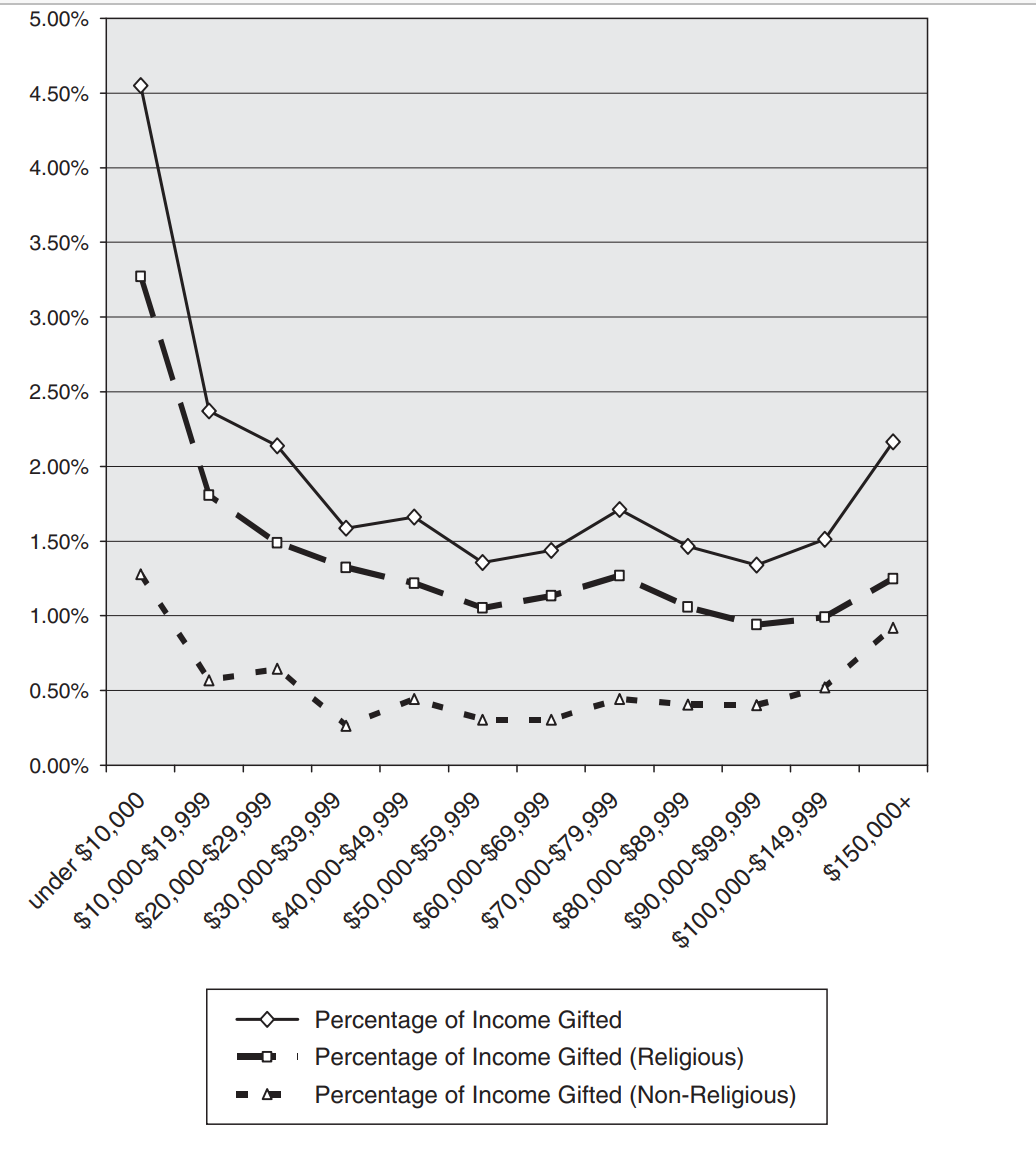The U-Shaped Giving Curve
Much academic ink has been spilt dancing on the head of a pin while debating the U-shaped giving curve.
What U-shape you ask? The one showing rich, and poor give a greater percentage of their income than the middle class. This phenomenon is real and until now, practically uninteresting since the explanation hinges on external factors you can’t change – e.g., tax code, some “poor” people only being income poor, not asset poor.

Until now…A novel, hot of the press study (June 2023, Hargaden and Duquette) experimentally and randomly gave participants different percentages of a set number of tokens. These tokens had monetary value used to donate to a real charity, a local United Way. What wasn’t donated was kept by participants.
Importantly, participants were told how many tokens they had but also how many others had been awarded. This “endowed” income had people experience being poor, middle class and rich in this token economy.
The modeling and analysis were uber wonky and factored in actual income, demographics and real charitable behavior. The finding is subtlety fascinating; one’s placement relative to others affects giving behavior, with lower shares of income donated in the middle of the distribution than at the low and high ends.
In other words, strong evidence that the U-Shaped Giving curve is explained, in part, by psychology. It’s how I feel on a relative basis. Keeping up with the Joneses.
So, what is it about the psychology of feeling poorer or richer that has one giving a higher percentage of income?
And how might this influence fundraising from the middle class, which is the overwhelming majority of your small donor file.
It’s posited that the poor might be more attuned to the needs of the community and more empathetic. We ran a live test for a food bank highlighting the rising inflation impacting everyone on the donate page. We got conversion and average gift lift and one explanation is we heightened their empathy and sense of community by subconsciously putting them in the same boat.
On the flip side, here are a couple test ideas to make people feel richer on a relative basis.
- Use Social Comparison:
- Why: People often gauge their wealth relative to others.
- How: Share data or stories that show how well-off they are compared to the global population or specific groups in need.
- The Endowment Effect:
- Why: People often value what they already possess more highly than equivalent items they don’t own.
- How: Remind them of the resources, skills, and opportunities they have at their disposal, emphasizing their ‘endowment.’
Kevin


